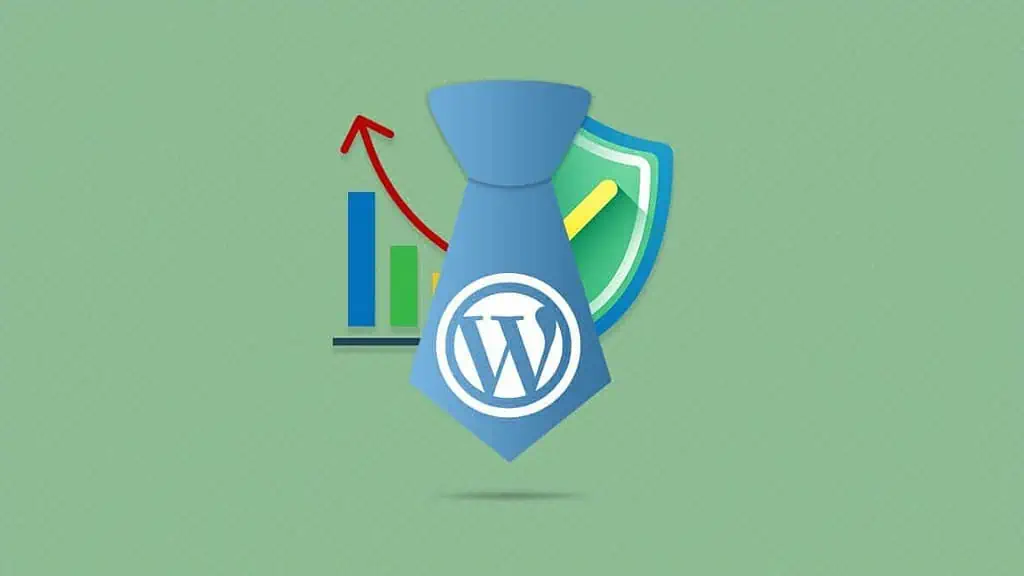If you’re a website owner, you know how important it is to keep your site secure from cyber attacks, malware, and data breaches. One of the ways to make your WordPress site even more secure is by implementing headless development. But what exactly is headless development and why is it a hot trend?
In this blog post, we’ll explore the concept of headless development, its benefits, and how it can help make your WordPress site bulletproof. We’ll also look at the omnichannel experience and how headless development enables a truly seamless experience across various platforms and devices.
We’ll dive into the technical aspects of headless development, including the role of APIs and the WordPress REST API. We’ll also discuss the challenges and considerations of implementing a headless architecture, and provide basic steps to get started with headless WordPress development.
Finally, we’ll explore the future of headless development and WordPress, and offer our predictions for how this trend might evolve in the coming years. By the end of this post, you’ll have a better understanding of headless development and whether it’s right for your own WordPress site. So, let’s get started!
Table of Contents
Understanding Headless Development
Headless development is a term that you might have heard of recently, but what does it actually mean? In traditional web development, the front end (what the user sees) and the back end (the server-side code that powers the site) are tightly coupled together. This means that any changes made to the front end have to be done in conjunction with changes to the back end.
Headless development, on the other hand, decouples the front end and back end, allowing them to be developed and maintained independently. This means that you can make changes to the front end of your site without having to worry about breaking anything on the back end.
So, how does this work in practice? It is not just a WordPress plugin you need to install, there is more to it than that. In a headless architecture, the front end is built using a different technology stack than the back end. Typically, the front end is built using JavaScript frameworks like React or Vue, while the back end is built using traditional server-side technologies like PHP.
To communicate between the front end and back end, APIs (Application Programming Interfaces) are used. APIs provide a way for different systems to talk to each other, allowing the front end to fetch data from the back end and vice versa.
In the context of WordPress, the WordPress REST API provides a way for developers to access content and data from a WordPress site using APIs. This means that you can use WordPress as a content management system, but build the front end of your site using a different technology stack.
Headless Development as a Trend in 2023: Headless development has been identified as one of the top trends in WordPress development for 2023. The main reason is that traditional website architectures often lack the flexibility to provide a seamless, integrated experience across all customer touchpoints and channels. Headless architecture, as a decoupled system, allows for independent development of the front end and back end. This flexibility enables the creation of a front end tailored to various platforms, devices, and channels, thus reaching a broader range of potential customers. The front-end and back-end in a headless architecture are connected via APIs, which also facilitates data exchange and third-party integrations.
Advantages of Headless WordPress:
Headless WordPress offers several benefits. It provides content flexibility, allowing you to send content to any device or platform from your WordPress dashboard. This is especially beneficial for businesses with a broad online presence. It lets you keep the WordPress admin dashboard while allowing developers to work with their preferred tools. Headless WordPress also offers scalability, as the decoupled front and back-ends can be scaled and updated separately. It can also lead to better user experiences, as a headless site can run significantly faster than traditional WordPress, which benefits SEO and user satisfaction. Lastly, it enhances security, as the separation of the front and back-end reduces the scope for vulnerabilities to be exploited.
Disadvantages of Headless WordPress: Despite its advantages, headless WordPress also has several drawbacks. It is more complex than traditional WordPress, requiring coding knowledge to set up a front-end framework and configure an API for communication with the back-end. The ability to use plugins is also lost, and functionalities that relied on plugins need to be developed from scratch. The feature to preview a post before publishing it is lost in a headless setup, which can lead to unnoticed formatting errors. Lastly, deploying and maintaining a headless WordPress website can be resource-intensive, potentially leading to higher costs.
Suitability of Headless WordPress: Headless WordPress is not the right choice for every website. While it addresses many issues facing online businesses, it may not be the perfect solution for all. For enterprise companies needing extra security, competitive site speeds, and multi-channel content management, headless WordPress could be the answer. However, for many website owners, the features offered by headless WordPress may not be necessary or worth the effort and expenditure. Therefore, choosing a suitable CMS for your project is crucial, and it’s important to consider how well a system aligns with your goals and objectives.
One of the biggest benefits of headless development is the ability to create a truly omnichannel experience for your users. An omnichannel experience means that your users can access your site from any device or platform, and have a consistent experience across all of them. With headless development, you can tailor the user experience to each platform or device, while still using the same back end system to manage content and data.
The Omnichannel Experience
In today’s digital landscape, customers expect a seamless experience across all platforms and devices. This means that your website needs to function just as well on a mobile phone as it does on a desktop computer. This is where the omnichannel experience comes in.
An omnichannel experience means that your customers can access your website from any device or platform and have a consistent experience across all of them. This is crucial for building customer loyalty and keeping them engaged with your brand.
With headless development, you can tailor the user experience to each platform or device, while still using the same back end system to manage content and data. This flexibility allows you to provide a seamless experience for your customers, no matter how they are accessing your site.
For example, let’s say you run an e-commerce store that sells clothing. With a headless architecture, you can create a separate front end for your mobile app that is optimized for touch screens and smaller screens. This front end can have its own unique features, such as the ability to swipe through products or use voice commands to search for items.
At the same time, your desktop website can have a different design and layout that is optimized for larger screens and mouse navigation. Both of these front ends can communicate with the same back end system, allowing you to manage your inventory, process orders, and handle customer data in a single location.
The ability to create a truly omnichannel experience is one of the biggest benefits of headless development, and it’s becoming increasingly important in today’s digital landscape. By providing a seamless experience for your users across all platforms and devices, you can build customer loyalty and drive engagement with your brand. So if you’re looking to create a website that can truly meet the needs of your customers, headless development is definitely worth considering.

The Benefits of Headless Development
If you’re considering implementing headless development for your WordPress site, you’re probably wondering what benefits it can offer. Let’s take a look at some of the advantages of going headless.
1. Tailoring User Experiences Across Various Platforms and Devices
As we mentioned in the previous section, the omnichannel experience is crucial for building customer loyalty and engagement. With headless development, you can provide a customized experience for each platform or device, while still using the same back end system to manage your content and data. This not only improves the user experience but also makes it easier for you to maintain your site.
2. Flexibility and Scalability of Headless Development
One of the biggest advantages of headless development is its flexibility and scalability. Because the front end is decoupled from the back end, you can easily switch out the front end without affecting the back end. This means that you can experiment with different front ends and technologies without having to worry about disrupting your content and data.
Additionally, because headless development relies on APIs to communicate between the front end and back end, you can easily integrate other systems and technologies into your site. This makes it easier to add new features and functionality as your business needs evolve.
3. Speed and Performance Benefits
Headless development can also offer speed and performance benefits. Because the front end doesn’t have to worry about rendering content, it can focus on optimizing the user experience. This can lead to faster load times, smoother animations, and better overall performance. Additionally, because the front end is typically built using modern technologies like React or Angular, it can take advantage of features like code splitting and lazy loading to further improve performance.
4. SEO and Other Digital Marketing Advantages
Finally, headless development can also offer SEO and other digital marketing advantages. By optimizing the back end for SEO, you can ensure that your content is easily discoverable by search engines. Additionally, by using analytics tools like Google Analytics, you can gain insights into how users are interacting with your site and optimize your marketing efforts accordingly.
Headless Development and WordPress
Now that we’ve talked about the benefits of headless development in general, let’s take a closer look at how it works with WordPress.
Why WordPress is Well-Suited for Headless Development
WordPress is well-suited for headless development for a few reasons. First, it has a robust back end system that makes it easy to manage content and data. Second, it has a REST API that enables developers to build custom front ends that can communicate with the back end. Finally, it has a large and active developer community that has created a number of tools and resources to make headless development with WordPress even easier.
Examples of Successful Headless WordPress Sites
There are numerous examples of successful headless WordPress sites that showcase the benefits of this approach. For example, the popular news website The New Yorker uses a headless architecture to power its website, allowing for a fast, responsive user experience. Another example is the open-source project Gatsby, which combines WordPress with its own static site generator to create lightning-fast websites.
Challenges and Considerations
While headless development offers many benefits, there are also some challenges and considerations to keep in mind.
Technical Challenges in Implementing a Headless Architecture
One of the biggest challenges of headless development is the technical complexity involved. Because the front end and back end are decoupled, developers need to ensure that the two systems can communicate effectively. This may require additional setup and configuration, as well as expertise in multiple programming languages and frameworks.
Considerations for Choosing Whether to Go Headless
Another consideration is whether headless development is the right choice for your business needs. While it offers many benefits, it may not be the right fit for every project or organization. Factors to consider include the size and scope of your website, your team’s skill sets, and the resources available to maintain and update the site.
How to Get Started with Headless WordPress
If you’re interested in implementing headless development with WordPress, here are some basic steps to get started:
1. Install and configure the WordPress REST API plugin.
2. Choose a front-end technology and set up your development environment.
3. Use the REST API to retrieve data and functionality from your WordPress site.
4. Build your custom front end and integrate it with the WordPress back end.
There are also numerous tools and resources available to help you with headless WordPress development, including plugins, themes, and tutorials.
The Future of Headless Development and WordPress
As the trend of headless development grows, it’s likely that we’ll see even more tools and resources emerge to make it easier to implement with WordPress. We may also see more organizations adopt headless architectures to provide seamless, cross-channel user experiences.
Headless development offers numerous benefits for WordPress site owners, including flexibility, scalability, and improved performance. However, it’s important to carefully consider whether it’s the right choice for your specific business needs and technical capabilities. With the right tools and resources, you can successfully implement headless development to create a truly customized, omnichannel user experience for your visitors.






